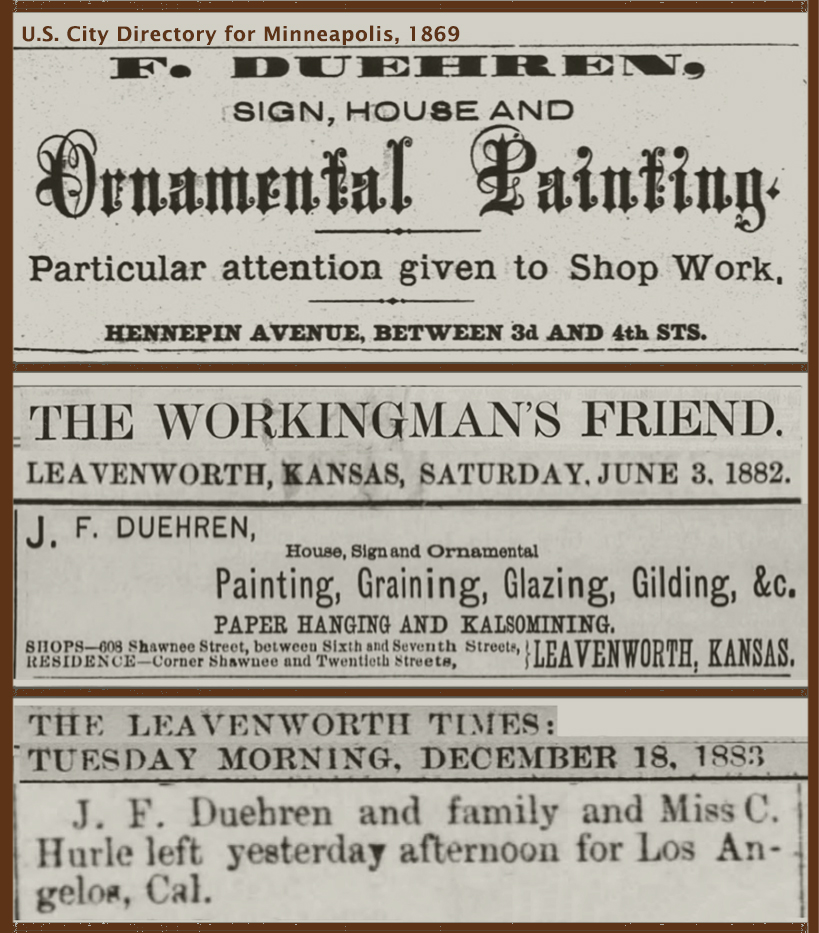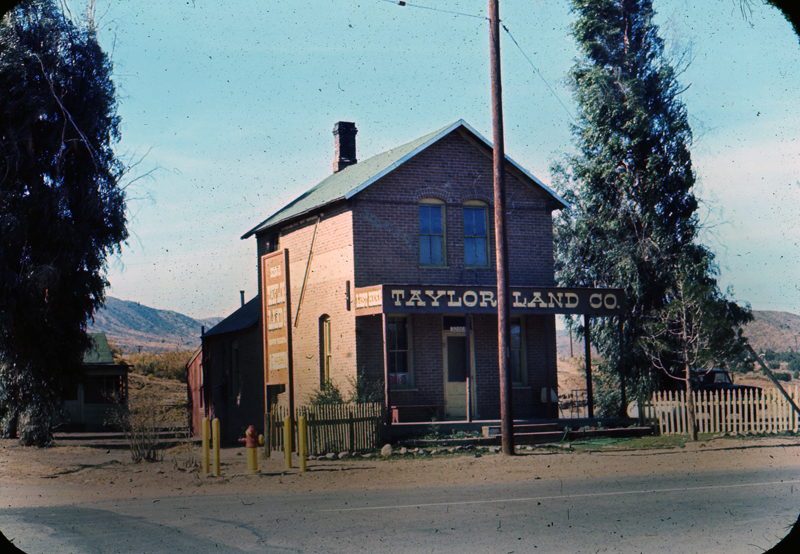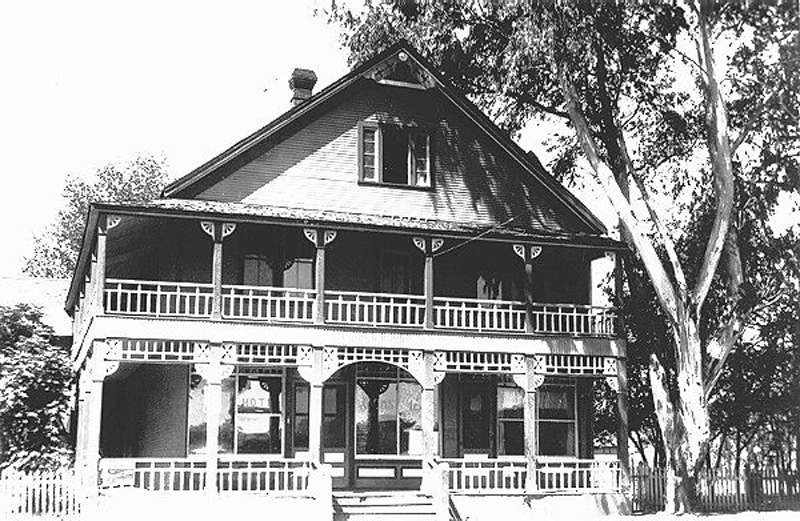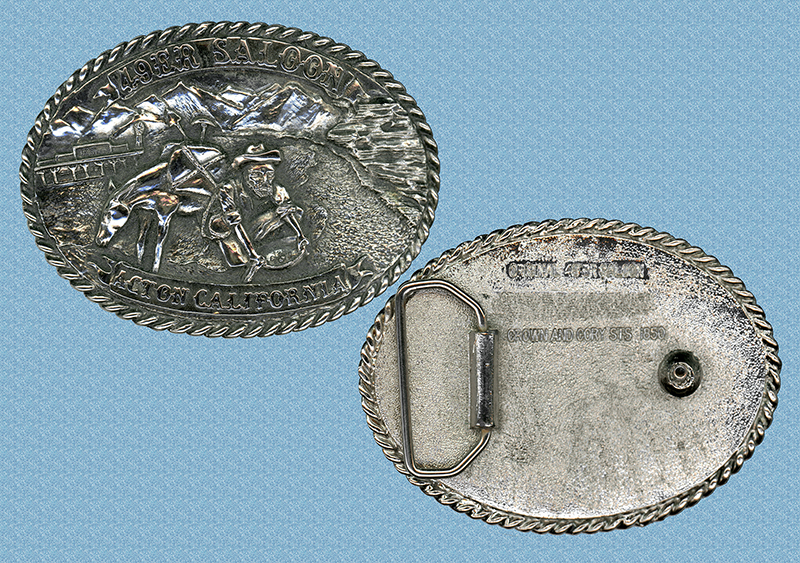|
Acton's famous '49er Saloon traces its origins to John F. Duehren in 1870, the same year he built the 2-story wooden Acton Hotel, right? Wrong. Everything in that sentence is wrong.
We've told and retold the story incorrectly for decades. One prominent SCV historian wrote in the 1990s (and earlier) that Duehren came out West in 1870 to participate in the gold mining frenzy and "built a small, board-and-batten establishment which he called the '49er Saloon."
Whiskey surely flowed all the way from Ravenna to Mount Gleason as soon as the first "Soledad City" mining camp popped up in the early 1860s, but John F. Duehren — Acton's first "permanent" resident — never laid eyes on the area until 1885, and there was no wooden saloon building at Crown Valley Road and Cory Avenue until long after 1870, and no Acton Hotel, either. The prior SCV historian is no longer with us, and he never cited sources, so we can't know where he obtained his information.
Acton historian Meryl Adams, who witnessed seven decades of Acton history first-hand (beginning in 1919) and carefully researched the rest through newspapers, interviews and other materials that were unavailable to other historians at the time, paints a far different and detailed picture.

Kalsomining is whitewashing, i.e., house painting. Click to enlarge.
|
Hailing from Germany, Johann Freidrich "John" Duehren came to Minneapolis in the 1850s, raised a family, lost his first wife and moved in 1870 to Leavenworth, Kansas, where he remarried and expanded his family. In Kansas, Duehren met a man named Richard E. Nickel, who would one day become the "Father of Acton" [Meryl Adams 1988:16].
The westward movement of the 1880s, sparked by the likes of Helen Hunt Jackson's 1884 "Ramona" novel and fueled by the railroad price war, brought the Duehren and Nickel families to California [ibid.] — although Duehren actually beat the rush, departing Kansas in December 1883 [The Leavenworth Times, December 18, 1883].
The Southern Pacific's development arm picked out (what became) Acton as a future townsite, and Duehren's arrival in Los Angeles at that precise moment put him in the thick of it. Duehren, then 61, purchased land from the railroad and boarded a train to scope out his new property.
He arrived Christmas Day 1885. He set up a temporary home for his wife and children and started building a real house next to it. He was a stonemason as well as a painter [1860 and 1870 U.S. Census for Minneapolis, Hennepin Co., Minn.]. He completed the house in 1887, the year the Nickels arrived and became Acton's second permanent family [Adams 1988:20-21].

Original red brick hotel, seen in November 1970. Three months later it fell down.
|
One of the next things John F. Duehren built, together with the Nickel brothers and another stonemason named A.B. Mellen, was a place for visitors that folks called the "red brick hotel." Duehren's wife and one of the Nickels ran it [Adams 1988:27]. It opened in 1889. John F. Duehren died three years later [Los Angeles Herald, May 6, 1892, and Duehren's headstone in the Palmdale Cemetery].
The red brick hotel was supplanted in 1897 when R.E. Nickel remodeled his 2-story Victorian house-and-general store at Cory and 4th Street into the iconic, two-story Victorian "Hotel Acton" [Adams 1988:75]. Nickel had recently finished building a new home for his family down the street. The home still stands in the year 2020.
As one big wooden house was converted into a hotel, the original brick hotel was converted into a house for Duehren's daughter Lydia and her new husband [Adams 1988:69].
Did the successive Acton hotels have a bar inside? Yes, apparently so, as we'll see momentarily. Was one or both of them called the '49er? Absence of proof isn't disproof, but we've encountered no evidence to that effect.

Click to enlarge.
|
What we do know is that Arthur R. Duehren, John Duehren's (eldest?) son, applied for a license in 1903 to operate a saloon inside the New Acton Hotel. His license application stated the hotel couldn't survive on room bookings alone [Los Angeles Herald, June 25, 1903].
The Los Angeles County Board of Supervisors denied the application. Why? Because the people of Acton had voted to become a "dry" town in the last general election [Los Angeles Herald, June 11, 1903].
Why would a rough-and-tumble mining town do that? That's where it gets fun.
It's precisely because it was so rough-and-tumble. Acton was divided into two factions. On one side were allies of William Broome, a shrewd businessman-politician. On the other side were friends of Norman M. "Rosy" Melrose, a boisterous Kentuckian who tended to instill fear in people. What came to be known in some circles as the "Crown Valley Feud" came to a head on January 20, 1903, when Melrose shot Broome dead in the street, right in front of the Acton Hotel.
The Duehrens were Broome partisans. The Duehrens ran the hotels and bars. Then as now, it's impossible to know who voted what way, but it doesn't take much imagination to speculate that the Melrose bunch ganged up at the ballot box in the November 1902 election to drive the Duehrens out of business. Specifically, the new "dry" law stated that "no application for either a wholesale or retail liquor license shall be granted" without a vote of the people of Los Angeles County [Los Angeles Herald, June 11, 1903].
Dial up the clock to April 1903, and one of the Duehrens and one of the Nickels testify in court that Broome was unarmed when Melrose gunned him down. (Melrose was exonerated.)
Add two more months and A.R. Duehren files for a saloon permit. He submits a petition signed by 32 residents, "includ(ing) all of the witnesses against Melrose upon his trial for killing Broome" [Los Angeles Herald, June 11, 1903]. "Even the superintendent of the Sunday school thought a saloon would be a desirable addition to Acton" [ibid., June 25, 1903]. Perhaps his sympathies stemmed from the fact that Broome had been a church deacon and John F. Duehren had co-founded a German Lutheran church back in Minnesota in 1856 [Minneapolis Morning Tribune, August 24, 1856, pg. 16].
"There is no possibility of Duehren's application being granted" because of the "dry" law on the books, the Herald reported [ibid.]. The newspaper speculated that "later another petition will be filed asking for a restaurant license."

Second Acton Hotel (1897-1945). Click image for more.
|
Why was A.R. Duehren coming for a license six years after his new hotel opened? We don't know — but we don't immediately find evidence that anyone named Duehren ever filed for a liquor license in the 1880s or 1890s. (Asterisk: Again, absence of proof isn't disproof, even when it's 80 proof.)
Maybe the Melrose gang ratted him out for not having a license (if he didn't) — after they made it impossible for him to get one. That's just conjecture. But something nefarious was surely going on. It was Acton in the 19-aughts, after all.
The second (wooden) Acton Hotel burned down in 1945. More research is needed to pin down the first mention of the '49er. County Assessor records appear to show a construction date of 1961, but they're ambiguous.
Genealogical researcher Tricia Lemon Putnam contributed to this story.
— Leon Worden 2020
| 




